Extraneous
Posts: 1810
Joined: 6/14/2008
Status: offline

|
Edited from the Queen’s English to American English.
[5087 España - by Robert Jenkins]
.B Engine(s) output: 15,500 hp
.B Top Speed: 19.5 knots
.B Main armament: 8 x 12-inch (305mm), 20 x 4-inch (102mm) guns
.B Displacement (full load): 15,450 tons
.B Thickest armor: 8-inches (belt)
.P The Españas were a class of three battleships constructed for the Spanish
navy between 1909 and 1921. They would prove to be the smallest of all the
dreadnought battleships built for any navy.
.P The ships were built in Spain with assistance from Britain; assistance that
was obviously in short supply between the years 1914-1918. The name ship, España,
was completed in 1913 and Alfonso XIII was completed in 1915. However, the effect
of the First World War on the ability of Spain to source resources meant that
completion of Jaime I was delayed until 1921.
.P Although the Españas were small ships for their type, their armament was
respectable when compared with their contemporaries; consisting of a 12-inch main
armament, with eight guns fitted in four twin turrets and twenty 4-inch guns in
casemates for their secondary armament.
.P However, two areas where their small size told was in their relative lack of
speed - less than 20 knots - and their poor range, making them little more than
coastal defense battleships.
.P Another compromise was their lack of armor protection. The belt was a maximum
8-inches thick and the armored deck just 1.5-inches; both lighter than
contemporary vessels.
.P España was named after the country she served, Alfonso XIII was named after
the then current monarch, while Jaime I was named after a 13th Century King of
Aragon.
.P España was originally named Alfonso XIII, but she was re-named in 1931 after
King Alfonso XIII fled Spain that year in response to the declaration of the
Second Spanish Republic. The original España had been lost after running aground
in 1923, after which she was wrecked by gales before she could be salvaged.
.P By the outbreak of the Spanish Civil War in July 1936, España was laid up in
the naval base at El Ferrol and it was here that a strange naval battle took
place on the 19th July. She and the cruiser Almirante Cervera, which was in
drydock, were crewed by those loyal to the Republican cause. From their
stationery positions they fought a fierce battle against ships and coastal gun
emplacements loyal to General Franco's forces. The result was a stalemate. However, a
couple of days later, the Republican crews were tricked into surrendering in
order to avoid needless destruction and bloodshed, following which the ships were
seized by Nationalist forces.
.P For what remained of her existence, España fought with Franco. In August she
bombarded Irun in northern Spain as part of the Nationalist war with the Basques,
and it was in this region that she met her end.
.P On the 30th April 1937, España struck a mine laid by her own side and sank
quickly. She was sailing off the port of Santander during the blockade of Bilbao;
capital of the Basque region, when she struck the mine.
.P Note: as she was sunk during the Spanish Civil War, España is only used in
World In Flames if playing in conjunction with Days of Decision.
[5089 Baleares - by Robert Jenkins]
.B Engine(s) output: 90,000 hp
.B Top Speed: 33 knots
.B Main armament: 8 x 8-inch (203mm), 8 x 4.7-inch (120mm) guns
.B Displacement (full load): 13,070 tons
.B Thickest armor: 2-inches (belt)
.P The Canarias-class consisted of two heavy cruisers built for the Spanish
navy during the early thirties. Like the earlier Alfonso-class, they were
designed by the British and were based on an existing class of Royal Navy
cruiser; in this case the County-class.
.P The two Spanish vessels featured a number of improvements and modifications,
including a slimmer, longer hull than their British counterparts. Despite these
changes, the hull was unmistakably that of a Kent-class cruiser, but where there
was a noticeable difference was in the superstructure.
.P A change in the arrangement of the boilers allowed for a reduction in funnels
from three to two, although the two funnels were then trunked into one large
stack. Visually, the bridge was also very different to the British version, and
gave the Canarias' an unusual, almost unfinished look.
.P The main armament consisted of eight 8-inch guns fitted in four twin turrets,
although thanks to the Civil War, Baleares first appeared minus her Y turret;
this was fitted nine months before her sinking. Secondary armament as designed
comprised eight single 4.7-inch guns and a mix of 40mm and 12.5mm light anti-
aircraft (AA) guns, although again, thanks to the raging Civil War, the actual
equipment fitted differed to the original specification and indeed changed over
time. The armament package was completed by four triple torpedo tubes, but a
catapult and aircraft handling capability was never fitted.
.P Armour defense was provided by a belt of 2-inches with an extra 2-inches of
thickness to cover the magazine spaces. Horizontal defense was limited to an
armored deck of 1.5-inches and an additional 2-inches of protection for the
magazines.
.P The ships were faster than the British versions thanks to the different hull
design and slightly more powerful machinery. These features allowed the ships to
retain bulges for anti-torpedo defense at no cost in speed.
.P The ships were named after the two large Spanish owned island chains; the
Canary Islands in the Atlantic and the Balearic Islands in the Mediterranean.
.P Baleares was still fitting out in Ferrol when the Spanish Civil War began in
July 1936. She was completed, minus her Y turret and with a hastily put together
secondary armament package, in December of that year. She fought with the
Nationalist forces during the war.
.P Baleares was not to enjoy a successful existence. After completion, she was
largely unsuccessful in waging war against Republican convoys and was placed back
in the dockyard in June 1937 to have her missing turret fitted.
.P Baleares was badly damaged during the Battle of Cape Cherchell in September
1937, when she came across two Republican light cruisers (see Méndez Núñez).
.P The Battle of Cape Palos was fought on the night of the 5th and 6th of March
1938, and was the largest naval battle of the Spanish Civil War. The two sisters
Canarias and Baleares were sailing in company with Almirante Cervera and three
destroyers, providing distant escort for a convoy that was bringing supplies from
Italy to Spain. The Nationalist cruisers lost their destroyer escort during the
evening of the 5th as they returned to base to refuel; this would cost the
Baleares dearly.
.P Just after midnight on the 6th, when off the coast of Spain, near Cartagena,
they stumbled across a Republican naval force that consisted of the light
cruisers Libertad and Méndez Núñez and five destroyers. The Republican destroyers
were able to fire a torpedo salvo but without effect. Over the next two hours the
two fleets remained apart and when they came together again at around 0200hrs,
the two heavy cruisers were able to bring their heavier ordnance to bear first.
However, in doing so, they made their positions plainly visible to the enemy
ships. While the two cruiser forces exchanged fire, three of the destroyers,
Barcaiztegui, Lepanto and Almirante Antequera were able to get into position to
fire their torpedoes at the unsuspecting Baleares.
.P A number of torpedoes found their target, exploding in her forward magazine,
causing catastrophic damage to the whole forward half of the ship. With the
protection of the convoy uppermost in mind, the two remaining Nationalist
cruisers departed the scene rapidly. Surprisingly, the Republican vessels did not
pursue them.
.P Baleares was quickly, and uncontrollably ablaze, and alerted by the burning
vessel, two British Royal Navy destroyers came to the aid of the survivors. Even so,
almost 800 of her crew perished with her.
.P As she was sunk during the Spanish Civil War, the Baleares counter is only
available if playing with Days of Decision.
[5093 Libertad - by Robert Jenkins]
.B Engine(s) output: 80,000 hp
.B Top Speed: 33 knots
.B Main armament: 8 x 6-inch (152mm), 4 x 4-inch (102mm) guns
.B Displacement (full load): 9,237 tons
.B Thickest armor: 3-inches (belt)
.P The Alfonsos were a class of three British designed light cruisers that
were built in Spain during the twenties. Their design was based upon the Royal
Navy's E-class, but with a number of detail differences compared to the earlier
ships.
.P The main armament consisted of eight 6-inch guns rather than the seven the
E-class were provided with; these being fitted in three twin and two single
mounts. Secondary armament was provided by four single 4-inch guns that were
capable of providing anti-aircraft (AA) defense, while close-range AA protection
was provided by two 3-pdr guns.
.P The armor protection came courtesy of a belt 3-inches thick at its maximum,
and for horizontal defense, an armored deck of between 1 and 2-inches to cover
the machinery and magazine spaces.
.P Visually, these fine looking ships had one funnel less than the E-class, with
only two funnels being required thanks to the placement of all the boilers
forward of the engine rooms.
.P The ships were fast, being capable of 33 knots on paper, and were actually
slightly quicker during trials.
.P The three ships of the class were named: Principe Alfonso, after the then heir
to the Spanish throne; Almirante Cervera, after the Spanish admiral that fought
during the Spanish-American War; and Miguel De Cervantes, the Spanish novelist,
poet and playwright. After the second Spanish Republic was proclaimed in 1931,
the name ship of the class had her name changed to Libertad; the Spanish word for
freedom. Her name was changed again at the conclusion of the Civil War, won by
the Nationalists, and she became the Galicia, named after the Spanish region.
.P Libertad was completed in September 1927. She was to see much action during
the Spanish Civil War, fighting on the Republican side and acting as the Flagship
for its navy during most of the conflict. Whether a ship ended up fighting for
the Republicans or Nationalists in the Civil War was dependent upon a number of
factors. In the case of Libertad, she was on her way to Cadiz, when the crew
turned on their officers, who were undecided as a group on which side to support,
The majority of the crew had no such doubts and declared their ship for the
Republican cause.
.P Libertad was ordered to sail for North Africa as one of the Republican navy's
main tasks at the start of the war was to ensure that troops in Spanish Morocco,
who were sympathetic to the Nationalist cause, could not get to the mainland.
This blockade was to fail, when, in September, the bulk of the navy left the
Strait in order to assist Republican attempts to take the Balearic Islands back
from the Nationalists. Not only did the invasion fail, but the removal of the
main naval forces from the Strait led to further Republican defeat at the Battle
of Cape Espartel (see Canarias).
.P Libertad was instrumental in inflicting heavy damage on the Nationalist heavy
cruiser Baleares in September 1937 in what became known as the Battle of Cape
Cherchell (see Méndez Núñez) and she was present once more when, six months
later, on the night of the 5th / 6th March 1938, she took part in the largest
naval battle of the Civil War. This battle, known as the Battle of Cape Palos
resulted in the sinking of Baleares (see Baleares).
.P As the war headed towards its grim conclusion, options for the Republican navy
were few, and she was to be involved in no other major operation.
.P Libertad was to survive the Civil War and, duly modernized, remained in
service with the Spanish fleet until 1970.
[5094 Méndez Núñez - by Robert Jenkins]
.B Engine(s) output: 45,000 hp
.B Top Speed: 29 knots
.B Main armament: 8 x 6-inch (152mm), 4 x 3-pdr guns
.B Displacement (full load): 3,918 tons
.B Thickest armor: 3-inches (belt)
.P Méndez Núñez was the name ship in a class of two light cruisers built for
the Spanish navy between 1917 and 1925. The Spanish Government had set up an
armaments company, Sociedad Española de Construcción Naval (SECN) in 1908 to
re-build the Spanish navy after its losses in the 1898 war with the United
States. Despite this, construction times for naval vessels were lengthy at this
time due to the impact of the First World War and the difficulty in sourcing
essential materials.
.P The ships bore similarities to the Royal Navy’s C-class cruisers no doubt due
to the fact that a quarter of the SECN was owned by three British armaments
firms that provided Spain with design and build expertise.
.P The class were fitted with six 6-inch guns fitted in six single mounts and had
a secondary armament of four 3-pdr anti-aircraft guns and four machine guns. They
also carried four triple torpedo tubes.
.P Armour protection was light, the ships being fitted with a belt of between
1.25-inch and 3-inches in thickness. Horizontal protection was limited to deck
armor of just 1-inch.
.P The engines provided a top speed of 29 knots, similar to the speed of their
British counterparts.
.P Both ships were named after famous Spanish admirals; Méndez Núñez being named
after the 19th century naval hero Admiral Casto Méndez Núñez, while her sister
ship, Blas de Lezo honored the memory of Admiral Blas de Lezo y Olavarrieta who
served the navy in the 18th century. Blas de Lezo was lost in 1932 after being
grounded on a reef.
.P Méndez Núñez was completed in 1924 and at the outbreak of the Spanish Civil
War she was in Africa. She quickly returned to Spain and fought for the
Republicans in that conflict, although her age limited her usefulness.
Nonetheless, she took part in two main actions during that war.
.P What became known as the Battle of Cape Cherchell took place on the 7th
September 1937. Méndez Núñez was accompanied by the light cruiser Libertad and
four destroyers in escorting a supply convoy when the ships came across the
Nationalist, heavy cruiser Baleares that morning. The accompanying destroyers
were ordered to stay with the convoy while the light cruisers headed for battle
with Baleares. The Republican ships were able to inflict serious damage on their
larger enemy in a battle that took place over many hours. Despite being damaged
early on however, the Baleares refused to give up and pursued the two enemy
cruisers. It was to prove a bad decision because when the ships came within range
once more that afternoon, Baleares was no more successful than she had been
during the morning exchange. The Nationalist cruiser was able to limp safely away
to fight another day, but it had been an impressive victory for Méndez Núñez and
Libertad.
.P Later in the war, on the night of the 5th / 6th March 1938 Méndez Núñez took
part in the largest naval battle of the Civil War, and a battle that, this time,
spelt the end for the Baleares (see Baleares).
.P After the war Méndez Núñez was converted to an anti-aircraft cruiser and she
remained part of the Spanish navy for over twenty more years.
.P Méndez Núñez was scrapped in 1963.
.P Note: there are two counters for Méndez Núñez; one in Republican colors and
the other as a ship of the Nationalist navy. The former counter is only for use
with Days of Decision, while the latter is available for use by the Spanish navy;
should your next game of World In Flames see Spain dragged into that conflict.
[5095 Navarra - by Robert Jenkins]
.B Engine(s) output: 25,500 hp (as designed)
.B Top Speed: 25.5 knots (as designed)
.B Main armament: 6 x 6-inch (152mm), 4 x 88mm guns
.B Displacement (full load): 6,500 tons
.B Thickest armor: 3-inches (belt)
.P Reina Victoria Eugenia was the sole ship of the Eugenia-class of light
cruiser. She was originally going to have up to three sister ships but only one
ship was ultimately ordered.
.P In common with most Spanish naval vessels built in the first half of the 20th
Century, Eugenia's design was based upon an existing class of Royal Navy vessel -
in this case the Birmingham-class - but with certain modifications to the design.
.P Unfortunately, by the time she entered service, she was pretty much obsolete.
An unfortunate feature of Spanish naval construction at this time was the lengthy
build time and thanks largely to the First World War, Eugenia was only completed
in 1923 despite being designed and laid down eight years previously.
.P She was named after Victoria Eugenia of Battenburg, who married the Spanish
King Alfonso XIII in 1906. After the declaration of the Second Spanish Republic
in 1931 she was re-named Republica. At the outbreak of the Spanish Civil War in
1936 her name was changed again, reflecting the fact that she was now in service
with the Nationalist navy. She became Navarra, after the region in northern
Spain.
.P At the start of the war she was under-going modernization. When this was
complete, Navarra was able to commence operations with General Franco's navy.
However, her lack of speed meant that she was not able to keep pace with the more
modern cruisers, Canarias and Almirante Cervera. As a result, she was of limited
use and she was mostly used as part of the Nationalist attempts to blockade
Republican held areas of Spain.
.P Navarra survived the Civil War and was reconstructed in 1938. The technical
details above are post her modernization except where stated and reflect her
details at the outbreak of World War II. Navarra retained six of her single 6-
inch guns, having had three removed. Secondary armament was strengthened to
provide an adequate anti-aircraft defense and consisted of four 88mm and four
20mm close-range guns. Her torpedo tubes were removed at this time.
.P Despite these modifications, Navarra remained obsolete by 1939 and although
she was to remain in service with the Spanish navy until the early 1950's, she
was relegated largely to a training role for much of that time.
.P Navarra was scrapped in 1956.
.P Note: this ship has two counters, one named Republica and one Navarra. The
Republica counter is for use with Days of Decision only, while Navarra is
available to the Spanish navy should Spain become involved in your next game of
World In Flames.
_____________________________
University of Science Music and Culture (USMC) class of 71 and 72 ~ Extraneous (AKA Mziln)
|
 Printable Version
Printable Version
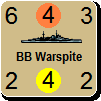








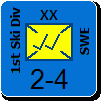

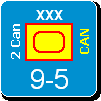

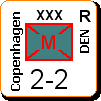
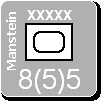





 New Messages
New Messages No New Messages
No New Messages Hot Topic w/ New Messages
Hot Topic w/ New Messages Hot Topic w/o New Messages
Hot Topic w/o New Messages Locked w/ New Messages
Locked w/ New Messages Locked w/o New Messages
Locked w/o New Messages Post New Thread
Post New Thread